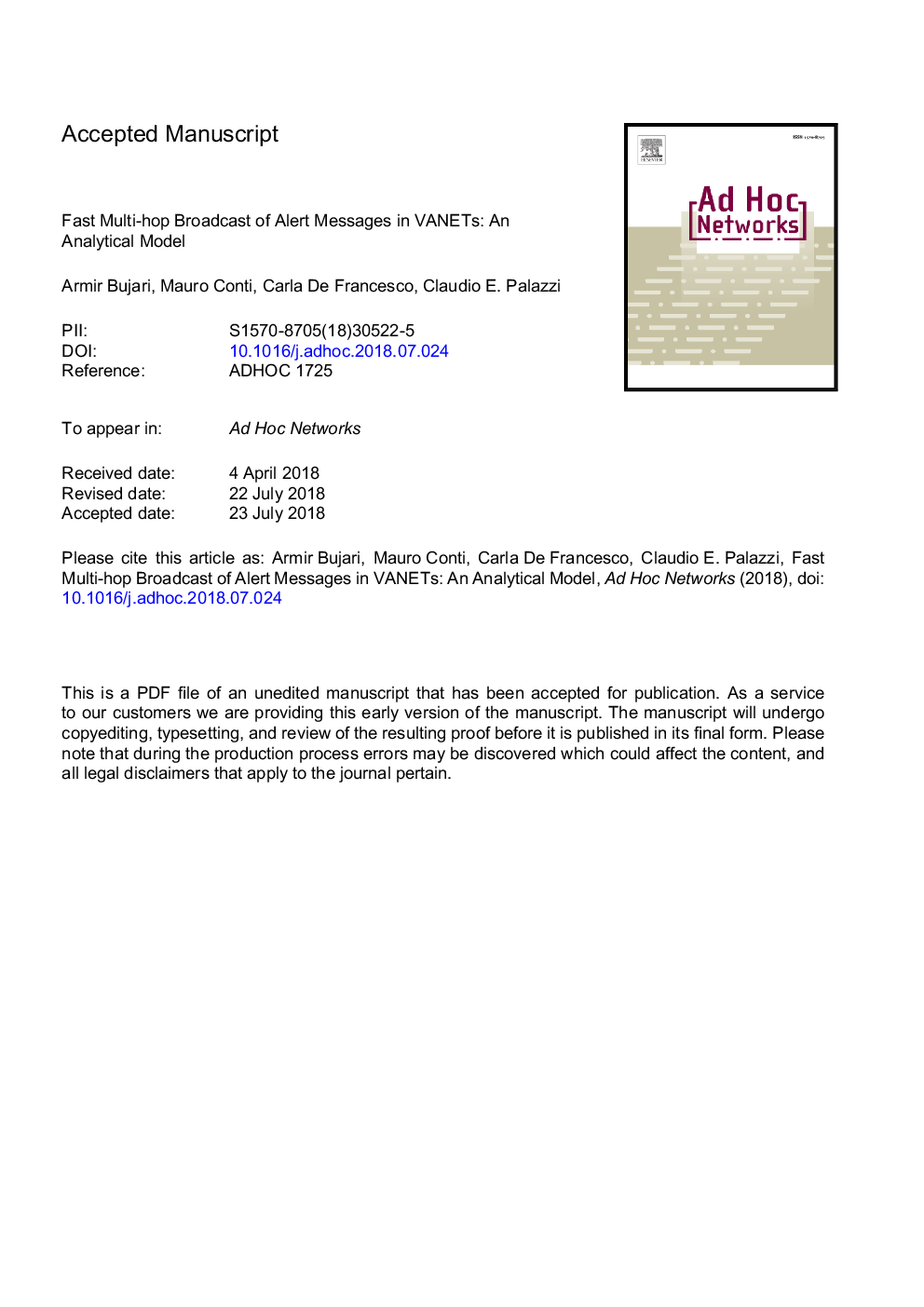| Article ID | Journal | Published Year | Pages | File Type |
|---|---|---|---|---|
| 8941860 | Ad Hoc Networks | 2019 | 29 Pages |
Abstract
Recent market trends in self-driving technology have revived the attention on vehicular networks, posing a demand for intelligent solutions supporting the proliferation of many useful applications. Inter-vehicular communication presents an opportunity, capable of providing the basis for localized, timely, collective intelligence. In this context, critical safety applications are particularly challenging, urging for quick multi-hop message propagation schemes within an area of interest. The anycast communication model embodied by safety applications and the shared broadcast medium demand for intelligent message propagation schemes minimizing latency. To this end, the state of the art approach is based on having different contention windows among vehicles so as to probabilistically select specific ones as forwarders in order to reduce the number of hops and transmissions needed to propagate the message. However, this solution has been mainly studied empirically. In this article, we present and discuss an analytical model, shedding light on the expected behavior and performance of such approach, along with a validation analysis conducted through the well known simulator NS-2.
Related Topics
Physical Sciences and Engineering
Computer Science
Computer Networks and Communications
Authors
Armir Bujari, Mauro Conti, Carla De Francesco, Claudio E. Palazzi,
